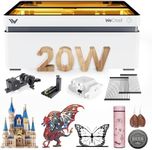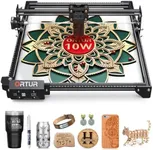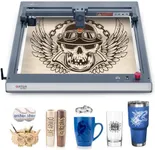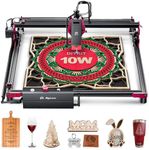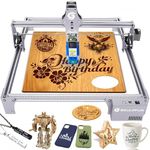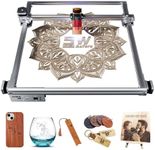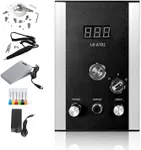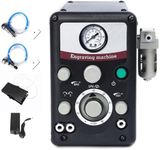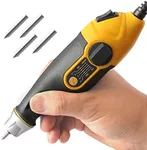Buying Guide for the Best Laser Cutters
Choosing the right laser cutter can be a daunting task, especially if you're new to the world of laser cutting. Laser cutters are versatile tools used for cutting, engraving, and marking various materials such as wood, acrylic, metal, and more. To make an informed decision, it's important to understand the key specifications that determine the performance and suitability of a laser cutter for your needs. Here are some essential specs to consider and how to navigate them.Laser PowerLaser power, measured in watts, determines the cutting and engraving capabilities of the laser cutter. Higher wattage means the laser can cut through thicker materials and work faster. For hobbyists and small projects, a laser cutter with 20-60 watts may be sufficient. For more demanding tasks or professional use, you might need a machine with 80-150 watts or more. Consider the types of materials you'll be working with and the thickness to choose the appropriate laser power.
Work Area SizeThe work area size refers to the maximum dimensions of the material that the laser cutter can accommodate. A larger work area allows you to work on bigger projects and cut larger pieces in a single pass. If you plan to work on small items like jewelry or small crafts, a smaller work area might be sufficient. For larger projects like signage or furniture components, you'll need a machine with a larger work area. Think about the typical size of your projects to determine the right work area size.
Material CompatibilityDifferent laser cutters are compatible with different materials. Some machines are designed to cut and engrave non-metal materials like wood, acrylic, and leather, while others can handle metals like steel and aluminum. It's important to check the material compatibility of the laser cutter to ensure it can handle the types of materials you plan to work with. If you need versatility, look for a machine that supports a wide range of materials.
Precision and AccuracyPrecision and accuracy are crucial for detailed work and intricate designs. This spec is often measured in terms of the smallest movement the laser can make, usually in microns. Higher precision means the laser cutter can produce finer details and cleaner cuts. If your projects require high detail, such as intricate patterns or fine engravings, look for a machine with high precision and accuracy. For less detailed work, a standard level of precision may be sufficient.
Software CompatibilityLaser cutters typically come with software that allows you to design and control the cutting process. Compatibility with popular design software like Adobe Illustrator or CorelDRAW can be important for ease of use and flexibility. Ensure the laser cutter's software is user-friendly and compatible with the design tools you are comfortable using. If you have specific software preferences, check for compatibility before making a decision.
Cooling SystemLaser cutters generate heat during operation, and a cooling system is essential to prevent overheating and ensure consistent performance. There are different types of cooling systems, such as air cooling and water cooling. Water cooling systems are generally more efficient and suitable for higher-powered lasers. Consider the cooling system based on the laser power and your usage frequency. For heavy use or high-power lasers, a robust cooling system is necessary.
Safety FeaturesSafety features are important to protect the user and the machine. Look for features like emergency stop buttons, safety interlocks, and proper ventilation systems. These features help prevent accidents and ensure safe operation. If you are new to laser cutting or plan to use the machine in a shared space, prioritize models with comprehensive safety features to ensure a safe working environment.

